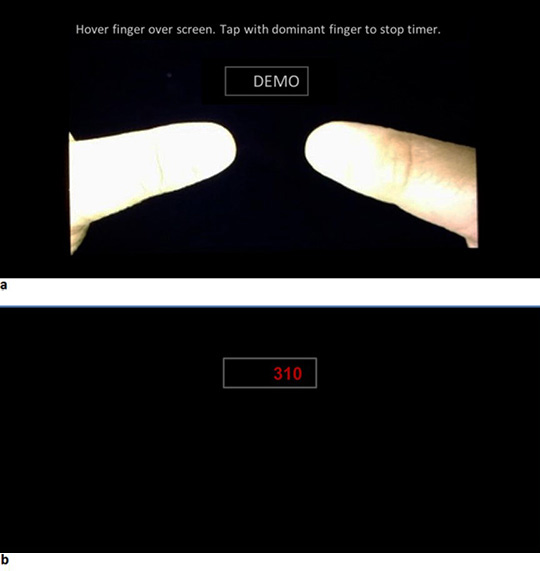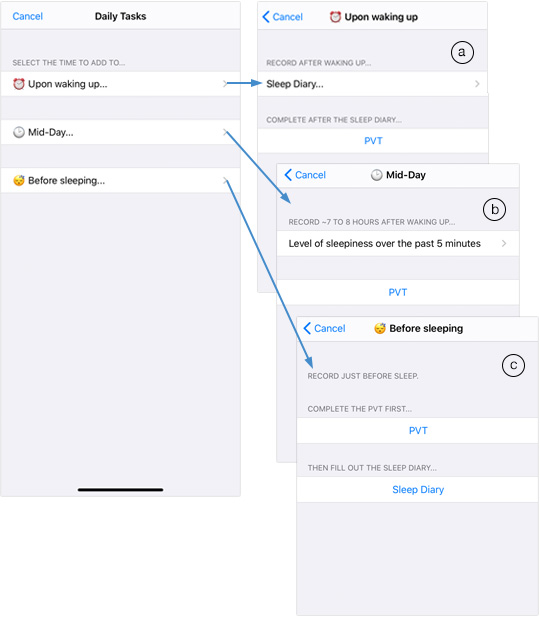|
|
 |

|
 |
 |
A new app called NASA PVT+ is now available on the Apple App Store. The app helps researchers study the alertness and cognitive performance of individuals during normal operational and lifestyle conditions which can be used to identify potential fatigue trends associated with sleep/wake patterns, work schedules, sleeping environments, etc. These data can also be used in conjunction with other data sources to see how fatigue levels are associated with other outcomes of interest. For the agency, the new tool will be important for studying fatigue and ways to manage it in the aviation and spaceflight domains. The tool is based on the Psychomotor Vigilance Test (PVT) - PVT 192 which is a test to evaluate neurobehavioral changes in vigilant attention and it is very sensitive to changes in sleep and circadian rhythms/body clock. The test itself measures a person’s reaction time to a visual signal and is ideal for repeated use because it is free of learning effects and aptitude differences that make interpretation of other cognitive measures difficult.

NASA PVT+ User Guide/Manual (PDF, 1.7MB)
NASA PVT+ Warnings and Notices (PDF, 91KB)
NASA PVT+ FAQs (PDF, 97KB)
The app uses this reaction-time test to gauge alertness directly from a mobile device and offers a streamlined process for gathering these data for research and analysis. This allows people working in a variety of complex, real-world situations to collect valuable research data, which will help researchers develop reliable tests and long-term solutions. Potentially any occupation in which alertness and fatigue management are essential to prevent errors on critical tasks could benefit from using the app. For example, the app provides a way to evaluate the impact of work schedules on fatigue and performance which is particularly critical in 24/7 operations (e.g., military personnel, airport security screeners, night shift medical personnel, and emergency responders).

Psychomotor Vigilance Task (PVT). (a) The touchscreen device is oriented in landscape position and the thumbs are displayed on the screen at the beginning of the test to show the user how to hold the device during the test. (b) The reaction times are displayed in a rectangular box in the upper middle part of the screen.
In addition to the PVT, the app includes a Karolinska Sleepiness Scale (KSS; Åkerstedt, & Gillberg, 1990), and a sleep diary where participants are asked to input their bedtime and wake up time, number of awakenings during the night, sleep quality, naps taken during the day and other comments they may have related to sleep. The aviation component of the app includes several questionnaires relevant to the aviation environment such as fatigue countermeasures, hassle factors, etc. specific to each flight leg.
The NASA PVT+ application is designed to present the tasks to participants in sequence, guiding them through the study measures as shown in the figure below.

Example of App interface. Example of tests taken using the touchscreen application. From left to right: the Daily Tasks displays three links: Morning, Mid-Day, Evening; (a) the morning link displays the tests taken in the morning; (b) the mid-day link displays the tests taken in the afternoon; and (c) the evening link displays the test taken in the evening.
Mobile App Background
The NASA PVT+ app was developed with a human-centered design approach, focusing on usability, intuitive interface design, and simple data administration.
The developers of the app, from NASA Ames Research Center’s Fatigue Countermeasures Lab, have sought to make this tool available for other researchers and scientists around the world. The PVT tool has already been an invaluable resource for NASA researchers. Per Erin Flynn-Evans, head of the Fatigue Countermeasures Lab which studies human fatigue and performance, "We designed it to replicate the tools that we use in the laboratory".
When publishing results using the NASA PVT+ app, please cite the following articles:
- When publishing results using the Simple PVT, cite:
Arsintescu, L., Kato, K. H., Cravalho, P. F., Feick, N. H., Stone, L. S., & Flynn-Evans, E. E. (2019). Validation of a touchscreen psychomotor vigilance task. Accident Analysis & Prevention, 126, 173-176. https://doi.org/10.1016/j.aap.2017.11.041
- When publishing results using the Basic and/or Aviation modes or using other functions of the app, cite
Arsintescu, L., Kato, K. H., Hilditch, C. J., Gregory, K. B., & Flynn-Evans, E. (2019). Collecting sleep, circadian, fatigue, and performance data in complex operational environments. Journal of Visualized Experiments: JoVE, (150). DOI: 10.3791/59851
- When mentioning issues related to system latency, cite
Arsintescu, L., Mulligan, J. B., & Flynn-Evans, E. E. (2017). Evaluation of a psychomotor vigilance task for touch screen devices. Human factors, 59(4), 661-670. DOI: 10.1177/0018720816688394
Privacy
NASA PVT+ has been designed to ensure the privacy of research participant data. NASA PVT+ results are anonymized and no personally identifiable information (PII) is used as part of the test.
Location Flexibility
The NASA PVT+ app can be used anywhere, even without a network connection, so researchers can have participants complete PVT reaction self-tests in a laboratory, an office, or in any operational setting.
Simple Study Setup and Analysis
NASA PVT+ studies can be set up quickly and easily from within the app. All data gathered by the app can also be easily downloaded to any Mac or PC system via iTunes.
System Requirements and Availability
The NASA PVT+ app is supported on iPhone, iPad, and iPod touch running iOS 12.4 or later.
Point of Contact: Erin E. Flynn-Evans |
|
|